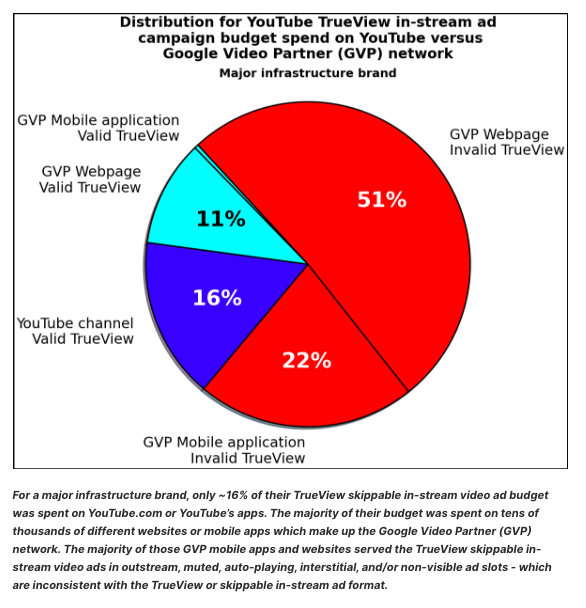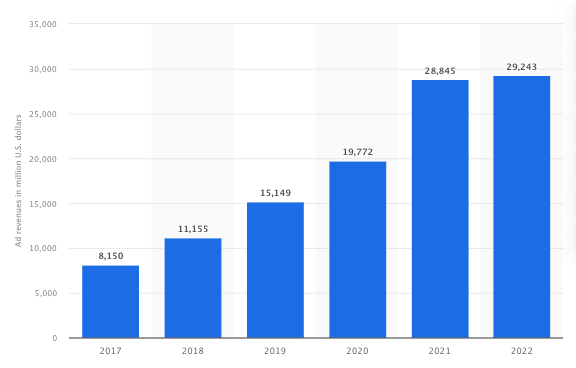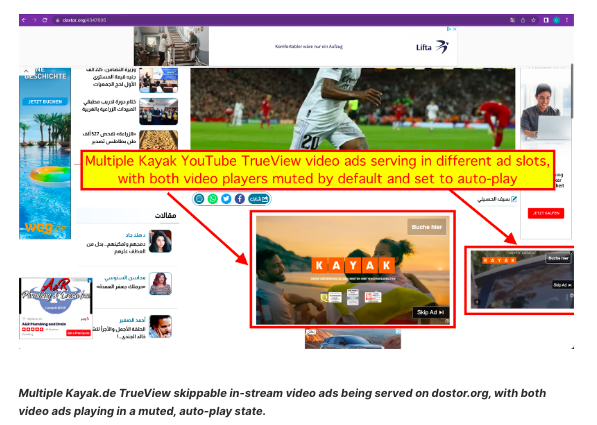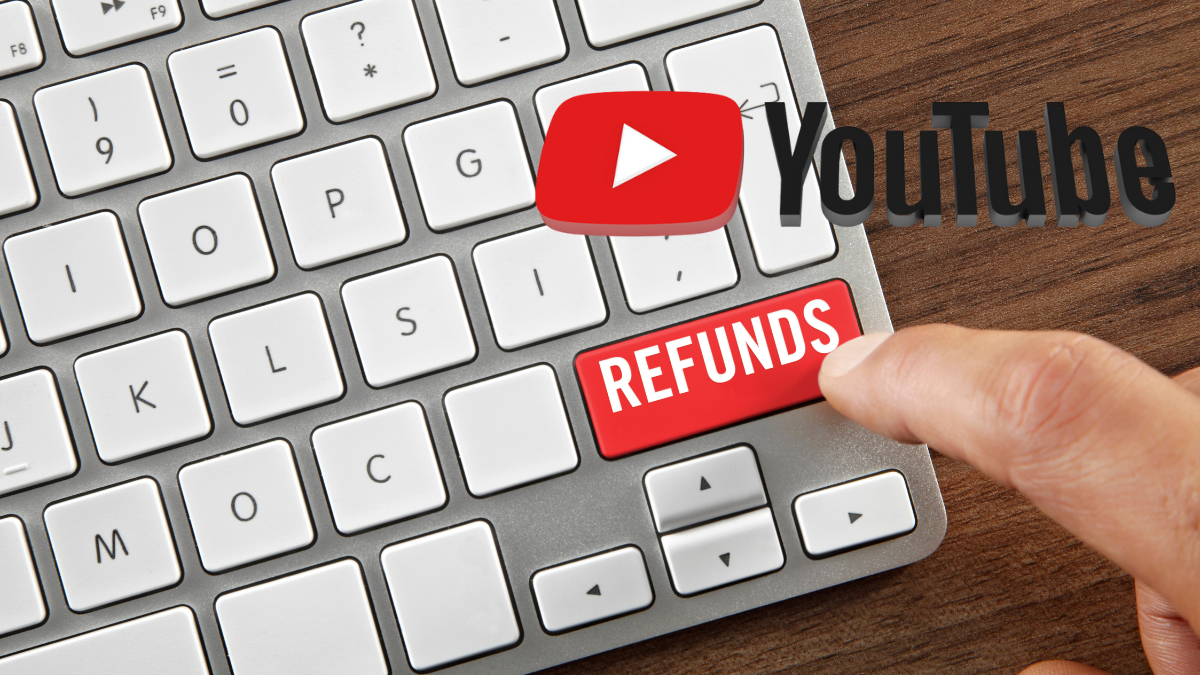In a recent research report, a concerning discovery has been made in the digital advertising industry, shedding light on a violation of Google-owned YouTube’s policies.
The study conducted by Adalytics, a digital ads analysis group, reveals that millions of YouTube advertisements on partner websites have been hidden from users. This revelation has raised significant concerns among advertisers and has sparked demands for transparency and accountability in digital advertising.
Hidden YouTube Ads Violate Policies
According to the study, these hidden YouTube ads play discreetly in the background of partner websites, often on an automatic loop and without sound, making them virtually invisible to users. This strategy allows advertisers to bypass viewers’ attention and avoid ad-skipping, but it goes against Google’s own terms and conditions.

Google, however, denies the researchers’ claims and emphasizes to advertisers that their “choice-based ad format” ensures charges only when a user watches the full clip or at least 30 seconds of it.
If an ad is skipped, advertisers pay nothing. TrueView ads are a crucial product for YouTube’s $30 billion per year business, with global clients typically allocating a significant portion of their YouTube budgets to skippable ads.

YouTube’s TrueView Ads Under Scrutiny
According to Adalytics, the implications for advertisers are substantial. Many advertisers, including Fortune 500 brands, the US federal government, and small businesses, have been misled about the true nature of Google’s proprietary TrueView skippable in-stream video ads. Instead of being served on high-quality publisher websites, these ads have often appeared on independent websites and mobile apps that do not meet Google’s quality standards.
As a result, advertisers may have paid for essentially worthless (or at least low value) TrueView ads on the Google Video Partner (GVP) network sites and apps that fail to adhere to Google’s guidelines. These ads are often placed in out-stream, muted, auto-playing, and interstitial video slots, which deviate from the expected skippable in-stream format. The report alleges that some aren’t even visible at all.

One of the main issues raised by this research is the lack of transparency and verification in the digital advertising industry.
Google’s restrictions on independent, third-party tracking tools limit advertisers’ ability to precisely measure how and where their ads are placed. This lack of transparency increases the risk of ad fraud and diminishes advertisers’ control over their ad placements.
Advertisers and Media Agencies Demand Refunds from YouTube
In response to these findings, advertisers and media agencies are demanding refunds and urging Google to conduct an independent audit of its policy enforcement.
Talking to the Financial Times, Joshua Lowcock, global chief media officer at UM, a New York-based ad agency said:
“This is a systemic failure by Google and YouTube to have proper oversight and enforce their policies. Google must have a qualified third party do a full independent audit of policy enforcement, as well as this failure, and refund all impacted advertisers.”
In support of this, Giovanni Sollazzo, the chairman of Aidem, a UK-based platform that assists marketers in reaching genuine users stated:
“We are advising all our advertisers impacted to promptly ask for refunds.”
The widespread demand reflects concerns over Google’s oversight and its failure to effectively enforce its own policies.
The incident has the potential to tarnish Google’s reputation within the digital advertising industry, which is valued at $400 billion. It underscores the need for industry-wide reforms to address issues of transparency, accountability, and quality control.
Advertisers, industry organizations, and advertising associations are advocating for standardized measurement and verification practices, independent audits, and stricter enforcement of ad placement policies. Collaboration with third-party verification companies and increased transparency are seen as crucial for rebuilding trust in the digital advertising ecosystem.
As per The Financial Times, Google stated:
“We have strict policies that all third party publishers must follow in order for us to serve ads and we recently expanded our partnership with Integral Ad Science” — a San Francisco-based digital ad verification group — “to allow advertisers to measure where their ads run.”
Moving forward, the industry must prioritize transparency, implement stricter quality controls, and establish stronger partnerships with third-party verification companies. Advertisers should diversify their ad placements and collaborate with trusted partners to navigate the challenges and maximize the impact of their campaigns.
By addressing the issues raised in this report, the industry can restore advertisers’ confidence and foster a sustainable and trustworthy digital advertising ecosystem.
Related Articles
- How to Use YouTube Ads to Boost Your Traffic
- While Netflix, Disney, and Amazon Spent $23 Billion On Original Content in 2022, 12 of the Top 15 Shows Are Many Years Old
- AI-Powered Mineral Analysis Startup GeologicAI Looks to Help Find More Desperately-Needed Battery Components
What's the Best Crypto to Buy Now?
- B2C Listed the Top Rated Cryptocurrencies for 2023
- Get Early Access to Presales & Private Sales
- KYC Verified & Audited, Public Teams
- Most Voted for Tokens on CoinSniper
- Upcoming Listings on Exchanges, NFT Drops
